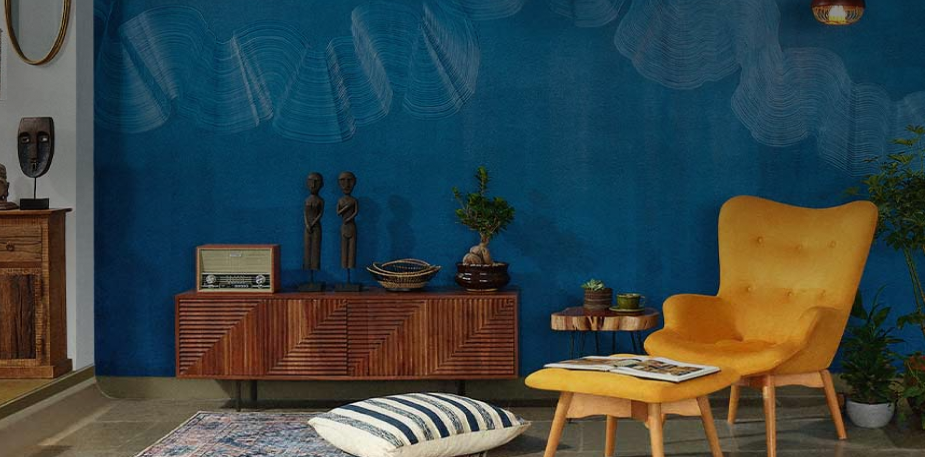Get your home interior design budget estimate
Celebrate Eid with these exceptional family recipes

Eid-ul-Fitr marks the end of the holy month of Ramadan and is celebrated by Muslims all over the world. After 30 days of dawn-to-sunset fasting and solemn self-reflection, Eid brings the faithful together to show gratitude for what they have and to share their abundance—with family, friends and those less fortunate.
And as with many festive traditions, food lies at the heart of the celebrations. Eid feasts are generally associated with biryani and sheer khurma—but there is so much more. Indulgent meals are laid out in homes everywhere, with platters of sweet and savoury dishes that are intrinsic to each community—two of which we explore here.
The Bohri Kitchen Diaries
The Bohris are known for their communal 'thaals', and The Bohri Kitchen, founded by mother-son duo Munaf and Nafisa Kapadia, has been popularising their cuisine since they launched a few years ago. (Nafisa serves as head chef, while Munaf's designation is Chief Eating Officer.)
What started as a home-dining experience has now evolved into a delivery service across Mumbai, serving up authentic Bohri food, including zam zam pulavo, mutton paya and their popular mutton samosas—and this year, they've launched a special Eid menu.
Munaf says that growing up, Eid was always a grand affair—a day when the entire family would come together (siblings, cousins, in-laws, even his sister's in-laws). The invitation would extend to as many people as they could fit into their home. "It's the time of year when Mom cooks with her earlier motivation—her family—and Dad always wakes up at 5 am a day before to source the best ingredients for our feast."

The Bohri Kitchen, founded by mother-son duo Munaf and Nafisa Kapadia, have been popularising their cuisine since they launched a few years ago. Image courtesy, The Bohri Kitchen
Eid this year is particularly special for Munaf and the team at The Bohri Kitchen because they've just relaunched in a new avatar. Last year, when the pandemic hit, the business was in a phase of rapid expansion—they had four kitchens, a QSR outlet and were scaling up. The extended lockdown proved to be a massive blow to their business, with Munaf almost ready to shut shop.
But his wife Zahabia and operations head Kadir said they should go back to their roots and do what they do best—serve up home-style Bohri food—but have it delivered to customers’ homes. So, they reopened in 2021 and have managed to get back on their feet in just three months, right in time for Eid.
They have a special menu of Iftaar platters, sweets, and savouries, orders for which need to be placed three days in advance. (The marination time for dishes like raan is 48 hours, so you must order ahead.)
Here, Munaf shares his family recipe for mutton khichra, the Bohri version of haleem, a silky stew made with ground meat, lentils, broken wheat and spices. Says Munaf, "In my opinion, mutton khichra is far superior to haleem—it's milder and more flavourful, with a different proportion of pulses. Our version is served with slivers of ginger, ghee, birista (fried onions) and is accompanied by an onion and imli kachumber, which provides a beautiful contrast to the rich stew."
The recipe requires some patience and coordination at the stove—but the result is well worth it!
Mutton Khichra Recipe

Mutton Khichra is the Bohri version of haleem, a silky stew made with ground meat, lentils, broken wheat, and spices. Image courtesy, The Bohri Kitchen
Ingredients:
For the wheat
- 750 g broken wheat
- 250 g mixed dal
- 1 tsp salt
- 2 tsp green masala*
- 2 cups oil
- 1 spice potli (a bouquet garni with 50 g fennel, 5 cloves, 8 g
cinnamon, 2 pieces black cardamom and 2 pieces bay leaf)
For the mutton
- 1 kg boneless mutton
- ½ tsp green masala*
- 2 cups oil
- Just enough water to cover
*For the green masala (prepare beforehand)
- 50 g garlic
- 50 g ginger
- 50 g green chillies
- 50 g coriander leaves
- 50 g mint leaves
- Grind all ingredients together with a little water to make a smooth paste
Method
- Wash the broken wheat at least three times in fresh water to remove as much starch as possible.
- Similarly, wash the mixed dal three times in water.
- Soak the wheat and dal separately overnight in sufficient water—both the wheat and dal should be well covered.
- The next morning, take the same water in which the wheat has been soaking and add the salt, 2 tsp of the prepared green masala paste, 2 cups of oil and the spice potli.
- Cook the wheat on a high flame till it comes to a boil. Once it starts boiling, reduce heat and let it cook until the wheat becomes tender. (It’s best to cook it with a closed lid and pour a little water on the lid to maintain pressure.)
- Side by side, empty the soaked dal, along with its soaking water into a pressure cooker. Add 1 tsp salt and cook for two whistles.
- While the wheat and dal are cooking, prepare the mutton.
- Add mutton pieces to a pressure cooker with 1 tsp salt, 2 cups oil and ½ tsp of the prepared green masala paste. Add enough water to cover and cook for 6-7 whistles until the mutton is very soft.
- Once wheat is cooked, take a larger vessel and strain the wheat, being sure to retain the water it has been cooked in.
- Add the blended wheat and dal mixtures into a pot and simmer together on a slow flame. This is the khichda base.
- Once the mutton has cooked, empty it into khichda mixture and cook for another 30 minutes until all the ingredients and flavours have melded.
- Garnish with hot ghee, fried onions (birista) and serve with mint leaves and slices of lemon (nimbu).
A Taste Of Karachi In The Capital
Delhi-based writer Maliha Khan straddles both sides of the border—originally from Karachi, she now calls the Indian capital her home. Maliha’s mother-in-law, the late author and culinary expert Sadia Dehlvi, specialised in the cuisine of her Punjabi Saudagaran community—so Maliha has been exposed to a variety of flavours on Eid and other occasions! (A self-taught cook, she is currently working on a book about the food and culture of Karachi.)
She says, "Growing up in Karachi, Eid was always the most festive affair and my favourite celebration of all. The Eid morning was somehow different and special from any other… we wore our new clothes and went to our relatives' homes one by one to wish them Eid Mubarak, and they came to ours. The elders would give us Eidi (money), and everyone would relish the delicious Eid spread in everyone's homes!"

Maliha is a self-taught cook, and is currently working on a book about the food and culture of Karachi. Image courtesy, Maliha Khan
One thing that stood out was that there would always be two different kinds of sawaiyan served (vermicelli pudding). The pandemic means Maliha can't travel to Karachi—but she's bringing a piece of her family to the table with her mother’s recipe for qemami sawaiyan. "Most people are familiar with sheer khurma, or the sawaiyan made with milk – but there is another kind of sawaiyan called qemami sawaiyan, with plenty of ghee and sugar."
Maliha says her mother's version is the best she's tasted because it's neither cloyingly sweet nor too rich. "Now that I have moved to Delhi, I make this sawaiyan every Eid to remind me of my mother who is in Karachi." Two things that she says one mustn't compromise on when making this dish are the dry fruits and nuts—she insists there must be lots on hand for garnishing!
Qemami Sawaiyan Recipe

The Qemami Sawaiyan dish is made with plenty of ghee, sugar, dry fruits and nuts. Image courtesy, Sudarshan Negi/ shutterstock.com
Ingredients
- 250 g vermicelli
- 1 cup ghee
- 4-5 cloves
- 4-5 cardamom (deseeded)
- 1/2 kg milk
- 1/2 kg sugar
- Dry fruits and nuts as per taste (Raisins, dried dates, almonds, pistachios, cashews)
- 500-750 g khoya (or qalaqand)
Method
- Heat the ghee in a big pot and once it's hot, add the cloves and cardamom until fragrant.
- Break the vermicelli into small pieces and add it to the pot, mixing everything together.
- Once the vermicelli is roasted and reddish in colour, add the milk to it.
- Once the vermicelli has softened and the sawaiyan is about to come to a boil, add the sugar.
- Mix everything together until the milk and sugar have dried up and the vermicelli is cooked.
- Add the dry fruits as per your taste requirements along with the khoya or broken qalaqand.
- Mix everything and cook for a few more minutes until the dry fruits have softened.
- Serve hot and garnish with more dry fruits and khoya on top.

Get Started with your interior design journey with us!
Speak to our design professionals
What’s the status of your home possession?
What’s the condition of your home/space?
Will you be living in your space during the renovation?
 Previous Question
Previous Question
Is your interior design budget over 4 lakhs?
 Previous Question
Previous Question
Book next available appointment slots with our experts!
Please Select Date and Day
 Previous Question
Previous Question

Something went wrong!
We were unable to receive your details. Please try submitting them again.

Appointment Scheduled!
Thank you for giving an opportunity to Asian Paints Beautiful Homes Service! Our Customer Experience Specialist will get in touch with you soon.
Appointment Date & time
Thank You!
Our team will contact you for further details.
What’s the status of your home possession?
What’s the condition of your home/space?
Will you be living in your space during the renovation ?
 Previous Question
Previous Question
Is your interior design budget over 4 lakhs?
 Previous Question
Previous Question
Book next available appointment slots with our experts!
DEC 2023
Please Select Date and Day
 Previous Question
Previous Question

Something went wrong!
We were unable to receive your details. Please try submitting them again.

Appointment Scheduled!
Thank you for giving an opportunity to Asian Paints Beautiful Homes Service! Our Customer Experience Specialist will get in touch with you soon.
Appointment Date & time
17 Oct 23, 03.00PM - 04.00PM





































